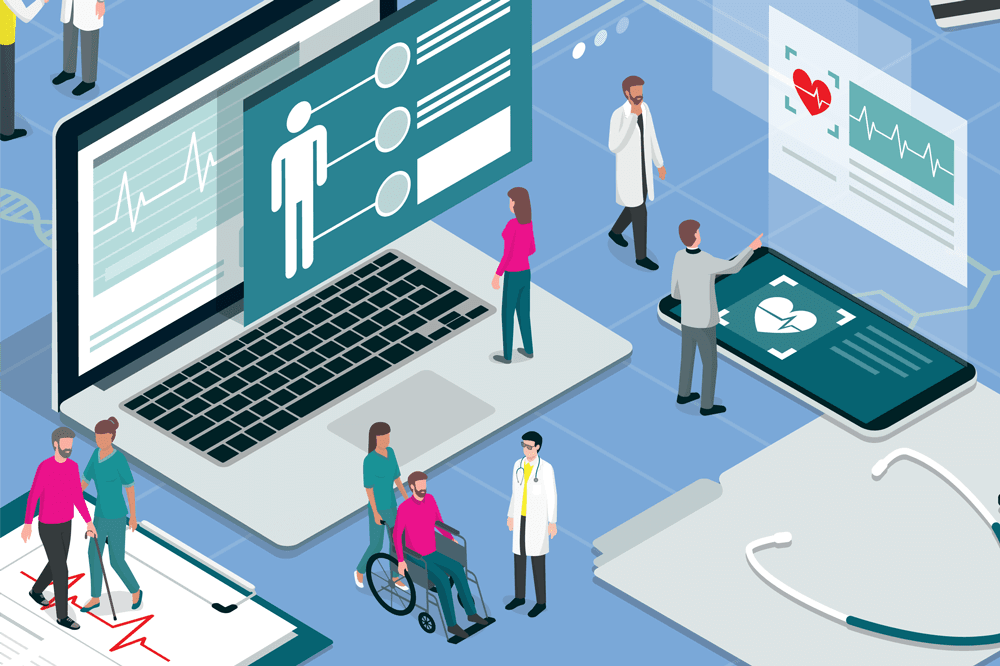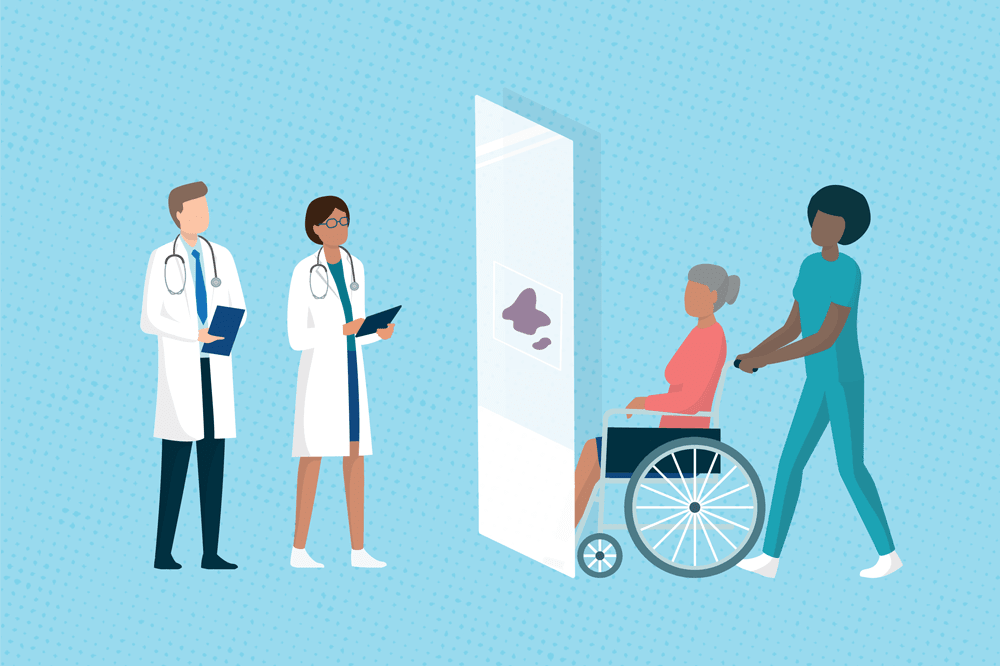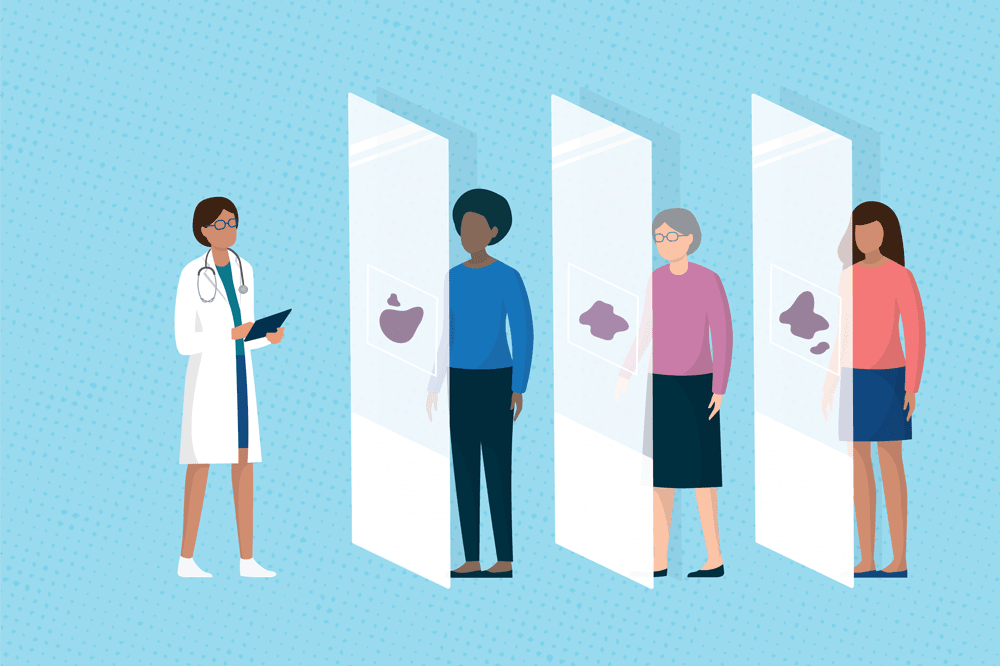In my third year, I did a four-week rotation: two weeks each of AP and CP. That first introduction allowed me to see and appreciate the daily work flow of anatomic pathologists in practice in an academic setting; observe autopsies to see the anatomic principles of disease; and explore the different problems encountered in each subspecialty anatomic service. Because I had the opportunity to observe the interactions between clinicians and pathologists, I felt I gained a better understanding of the various roles of laboratory personnel (from residents and fellows to lab managers) and of the clinical laboratories themselves (where they are, who works in them, and what they each process). I was also given the chance to explore clinical consultation questions, troubleshoot errors in analytical tests, and learn about quality assurance and improvement outcomes. By the end of my rotation, I felt I understood the perspective of the pathologist when specific consultation questions arise – something that would stand any physician from any specialty in good stead.
In my fourth year, I did two stints in pathology. The first was a four-week rotation in dermatopathology, which was amazing because it let me dive deep into a single subspecialty for a prolonged period of time. I saw as many specimens as a typical resident on the service and learned about the difference between diagnosis in dermatopathology versus other anatomic disciplines. I then did four weeks of anatomic pathology so that I could improve my skills with “bread and butter” surgical pathology cases, learn basic grossing techniques, attend daily lectures, and see as many interesting cases as possible.

How were your clerkships structured?
At eight o’clock every morning throughout the rotation, we attended the residents’ lecture series. Each topic (in both AP and CP) averaged four to five lectures. After that, the rest of our day’s schedule depended on whether we were currently experiencing AP or CP.
For the rest of the morning, my time in AP was spent previewing cases with a resident on the service. Often, the resident would give me a few of the cases they had already seen and ask me for a blind description of what I saw. It wasn’t necessary to find a definitive diagnosis, but it was considered a good start if I could at least suggest benign versus malignant. The most important skill that this part of the experience taught me was the ability to accurately describe what I saw.
In the afternoon, I reviewed assigned unknown slides by myself, and then with the resident or attending. I participated in sign-out with everyone on the service and followed up on cases that could not be signed out. Unscheduled but frequent occurrences included autopsy observations (even when not on that service), clinician consultations, gross room frozen section calls, and the opportunity to observe grossing, if the resident training me was on a grossing service.
CP was structured slightly differently. The mornings were dedicated to laboratory director-initiated didactic sessions about what takes place in the lab. In the afternoons, I took part in laboratory tours with lab techs (which often meant observing each position for a while as I rotated through the lab); learned about QI/QA projects currently underway; and was assigned papers to read and discuss the next morning. The apheresis clinic, in particular, involved taking a history and physical examination of each patient so that I could learn the indications for various procedures.
Why are these experiences important for all doctors?
Every doctor needs to know where their laboratory tests go and what the limitations of those tests are. That way, they will know what pathologists and lab medicine professionals need from them – in terms of sample type, quality, background information, and more. Most of all, it’s important for all doctors to know that there are professionals available 24 hours a day to consult when they have questions on laboratory testing. For surgeons in particular, it’s important to show what constitutes a useful specimen – pathologists can’t make an adequate diagnosis on permanent tissues if the quality is lacking. It’s also good for students anticipating a career in surgery to understand the purpose and limitations of the frozen section consultation.
I know that, over the course of my clerkships, I gained an understanding of why certain cases take longer to sign out than others. I can now appreciate which cases are simple and which are more complex and require further consultation – not to mention which clinical tests are possible and which are not. I know what molecular testing is, its pros, and its cons; I understand the benefits and the pitfalls of analyte testing for quality control. Such knowledge will ultimately make me, and other medical students who pursue it, a better doctor.
For me personally, it has also been valuable to get to know the kinds of people who go into pathology and to identify good (and not-so-good) role models. I’ve also become familiar with the workflows of various types of pathologists, which has helped me to decide which subspecialty I may want to pursue in the future. Fellowship applications must be sent at the end of the second year of residency, so I’m glad I have a head start on making my choice!

Do you have a favorite anecdote from your pathology clerkships?
I have several, each of which taught me a different lesson.
One took place in a transplant setting. Our urgent question: was the donor kidney viable? To find out, I ran to the frozen section room with Dr. Picken. The frozen section, pathology resident, and renal transplant surgeon were waiting. Everyone positioned themselves around the multiheaded microscope. “Yes, yes. This patient definitely had some long-standing hypertension. Is it too much? Hmm. I’d say somewhere between 15 and 20 percent of the glomeruli are sclerosed. Yes, 15 to 20.”
The transplant surgeon stated that he did not know what to do with that information; the cutoff for rejecting a donor kidney was usually 20 percent. Dr. Picken looked again. “It is definitely less than 20 percent. Yes. Definitely.” The transplant surgeon did not seem reassured. Everyone stared blankly at Dr. Picken, who then loudly asserted, “I would put this kidney in my daughter!”
After further explaining her rationale and pointing out other aspects of the donor’s clinical history and data that supported her conclusions, the transplant surgeon was assured. Why was this experience so meaningful to me? It demonstrated the very real consequences of the pathologist’s diagnostic abilities. Although the donor kidney’s sclerosis percentage was borderline, the pathologist had to use more than just guidelines and flowcharts to prove her point. She was confident and acted as a true consultant – a true “doctor’s doctor.”
Another incident took place in the gross room, where I observed an intraoperative frozen consultation for a patient who was undergoing a routine laparoscopic abdominal surgery. The surgical team noticed a suspicious-looking adnexal cystic mass, which they biopsied and sent for frozen section. On gross examination, the cyst was clearly mucinous. However, it was unclear to all of us whether it was a benign cystadenoma or a cystadenocarcinoma. It was a bulky tumor, but still seemed lined by a relatively smooth capsule. The assumption was that it was probably benign. Yet, on microscopic examination, there was clear stromal invasion, cytologic atypia, and complex architecture. This was a malignant process. We were all pretty surprised, but could nonetheless make a diagnosis on frozen section. This was a great experience for me, because it allowed me to witness a good indication for intraoperative frozen section consultation. I continue to believe that most surgical trainees don’t understand this topic well and don’t have adequate training for it at present.
When I had the opportunity to observe residents in the gross room and follow their cases, I became acutely aware of the kinds of mistakes that are inevitable in surgical pathology training. I witnessed a resident’s inability to make a diagnosis on a dermatopathology case because it was sectioned incorrectly. I became aware of what autopsy material can be overlooked and what needs to be saved. I came to understand how ordering the wrong stains on a case with very little tissue could actually be detrimental to final diagnosis because the block was exhausted before the right tests could be performed.
I was even fortunate to have the opportunity to see firsthand the effects of intraobserver variation and quality assurance. When signing a case out involving acute cellular rejection surveillance after a lung transplant, I was able to see the same case with two pathologists – one a thoracic pathology expert, the other not. They came to two slightly different conclusions on grade of rejection. I thought this was particularly interesting because, although this sort of thing is not unheard of among pathologists, the other medical students on my clerkship truly appreciated its consequences when they saw it unfold before them. The outcome had a very real effect on the patient: one conclusion indicated treatment for rejection, whereas the other did not. The daily quality assurance conference, where the case was ultimately reviewed, showed me the beauty of collaborative diagnosis.

Although I don’t plan to pursue a career in pathology, I did complete a pathology clerkship as my elective course. I had some interest in the discipline from the brief exposure I had through SCOPE (Students Curious in Outrageous Pathology Experiences – our pathology interest group), and I enjoyed some of the pathology from my second-year courses. However, I realized that I still did not know much about the career and lifestyle of a pathologist, so I decided to take the course to learn a little more about the specialty and the role of the pathologist in patient care.
The clerkship took place near the end of my third year of training. I worked with residents, fellows, and attendings, and I was able to rotate through different parts of the department every few days. For the most part, I shadowed whoever I was assigned to that day. I had the opportunity to participate in resident lectures and, if time permitted, had some one-on-one education with residents. I was also able to work with staff in the apheresis center and blood bank and partake in a quality assurance meeting with the staff there.
I think the biggest benefit of the clerkship was that it allowed me to gain insight into the extremely important and diverse roles that pathologists play in the daily lives of our patients. As a future clinician, I believe it is important for me to understand the many influences pathology has on my medical career. The main reason I personally pursued a rotation in this specialty was to gain an understanding of the role of a pathologist. The elective afforded me the opportunity to see all aspects of pathology, whether clinical or anatomic, and gain insight into how I can enlist the help of pathologists in the future to provide the best and most efficient care to my patients.
The rotation had one unique feature: I was asked to maintain a Twitter account and post pathology-related tweets daily. Although it might not seem like much, I actually found it helpful for reinforcing the new concepts and ideas I encountered every day . Before posting, I would look up a topic that was relevant to my work that day, read around it, and try to condense it into a short message that I could tweet out. It was a fun, interactive experience that allowed me to communicate with pathology enthusiasts from around the world.
If I could speak to those in charge of medical education, I would encourage them to consider creating a short pathology rotation that would allow students to learn about the variety of roles pathologists play in the care of a patient. Although it is impossible to capture everything that goes on in the laboratory in just a short time, it is definitely worthwhile for future clinicians to better understand the world of clinical and anatomic pathology – a specialty that plays a key role in patient care.
Brandon Trac is a medical student at Stritch School of Medicine, Loyola University Chicago, USA.
Do you think pathology training should be mandatory?
Ensuring that all medical students have some pathology training could save costs down the road by preventing improper laboratory test utilization. It would also expose medical professionals to an aspect of the hospital most doctors don’t often see, thereby strengthening the entire institution’s collaborative mission of patient care. We hear about this with nurses, doctors, and pharmacists – but we never hear about the laboratory professionals!
Pathology education can improve patient care. Providers are often unfamiliar with how laboratory professionals record and input results into the electronic medical record; if they were to spend time with the individuals who process specimens (rather than just those who manage the labs), they might gain a greater appreciation for what their results mean in the context of specificity and sensitivity. Just because a test result is positive does not mean it is a true positive.
To the non-pathologist audience, I would like to stress that this isn’t about trying to get more students to pursue pathology. Although that remains an important topic, the message at hand is that all medical students should witness pathology education in a setting that is relevant for healthcare.




